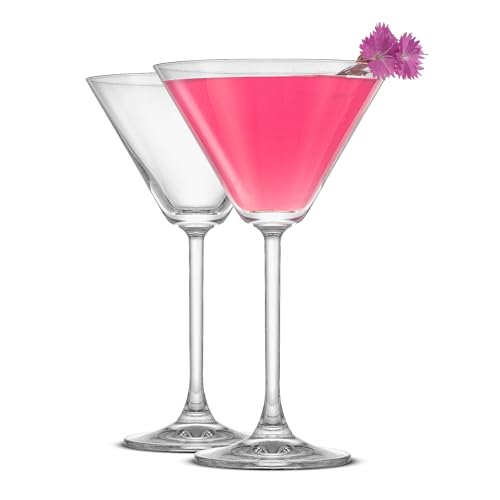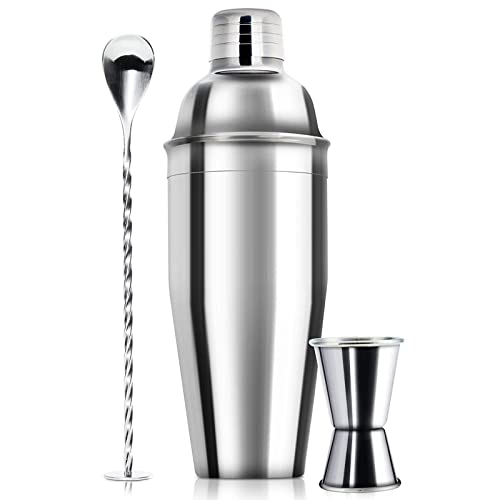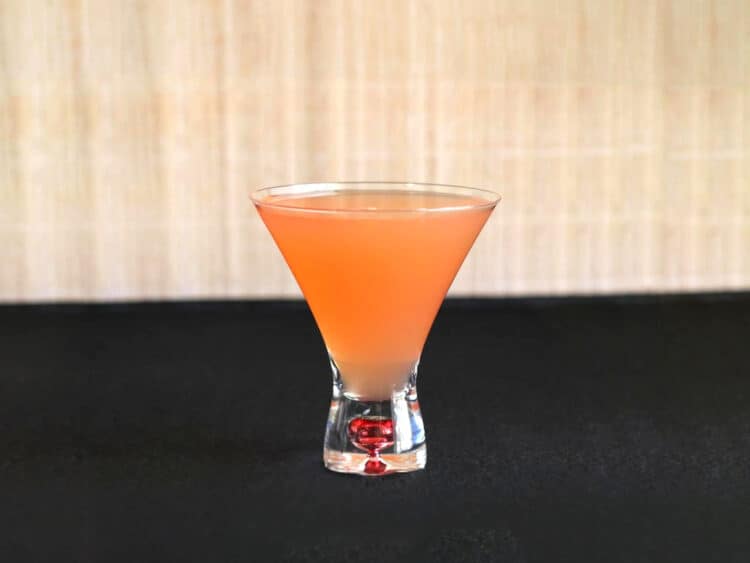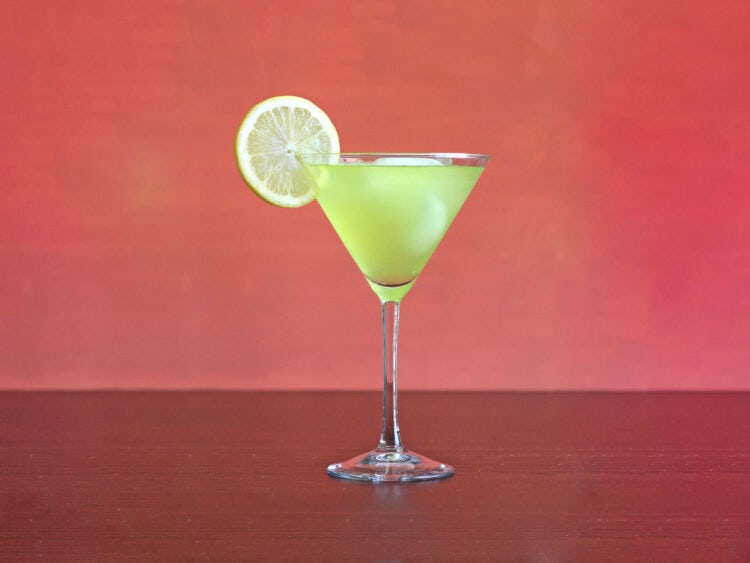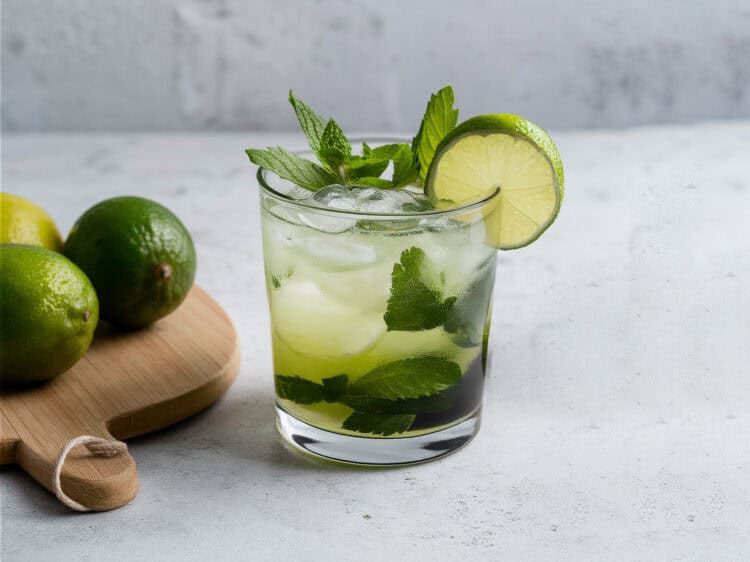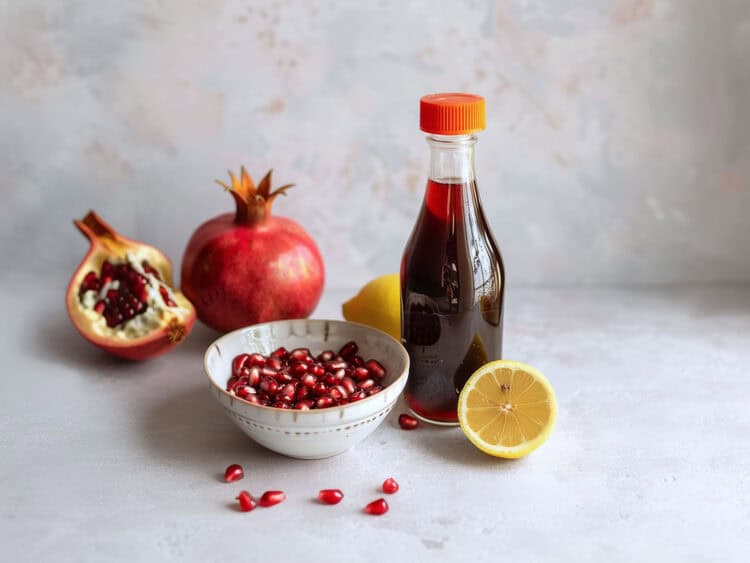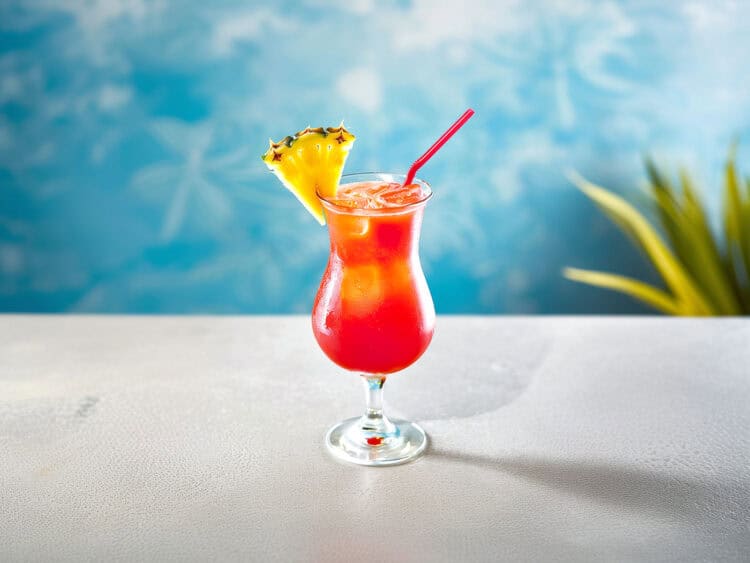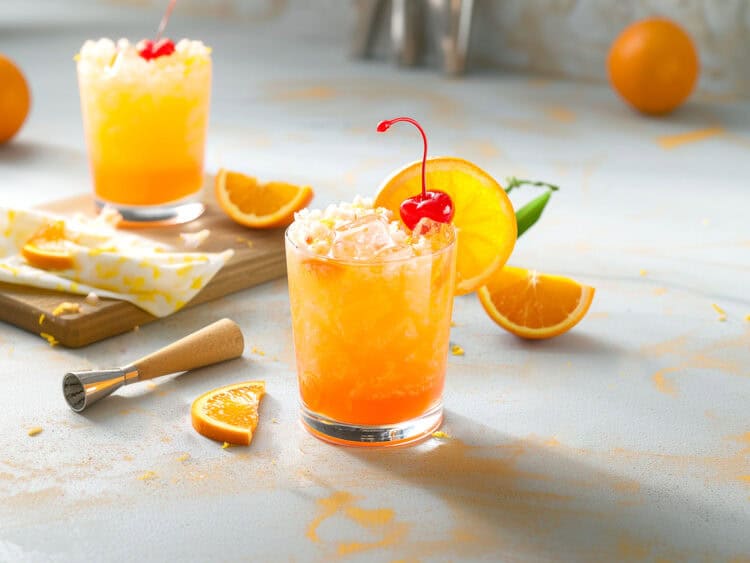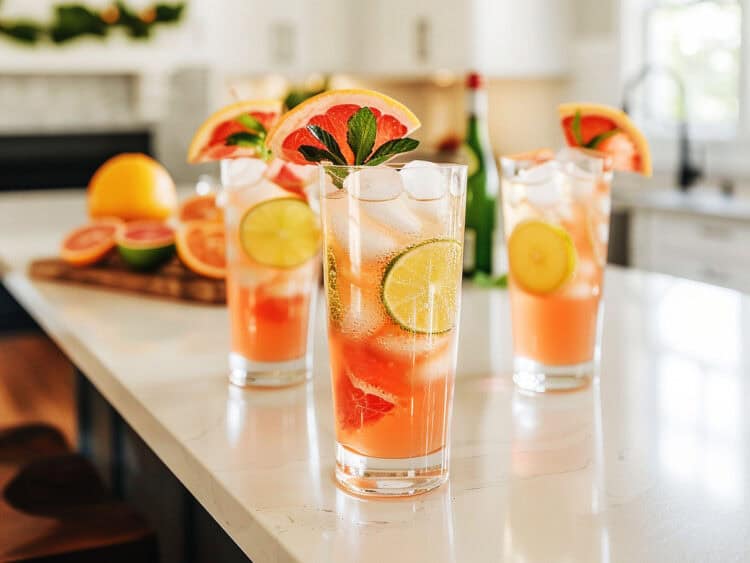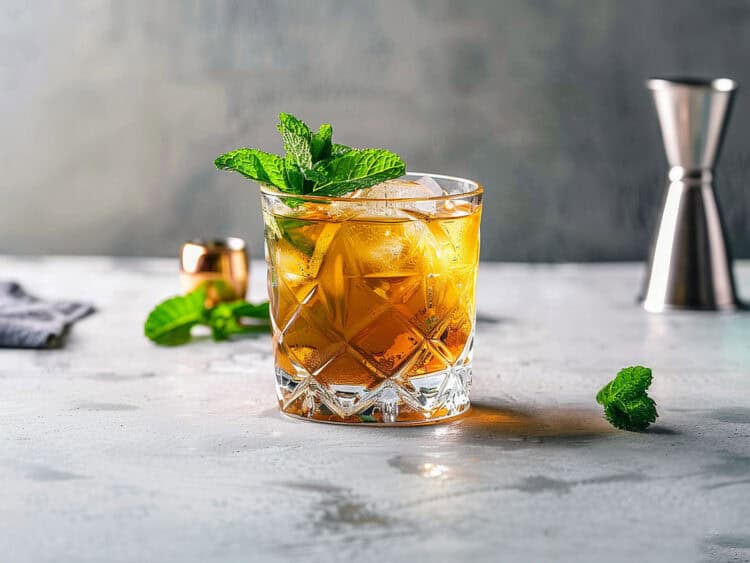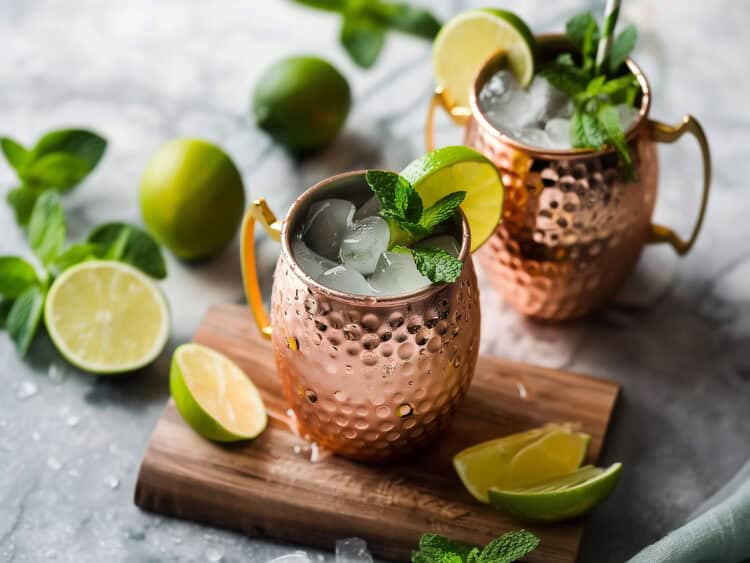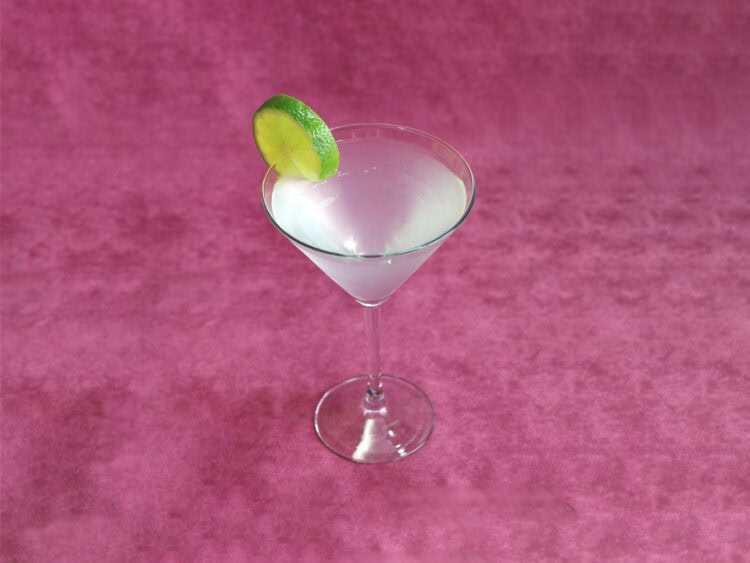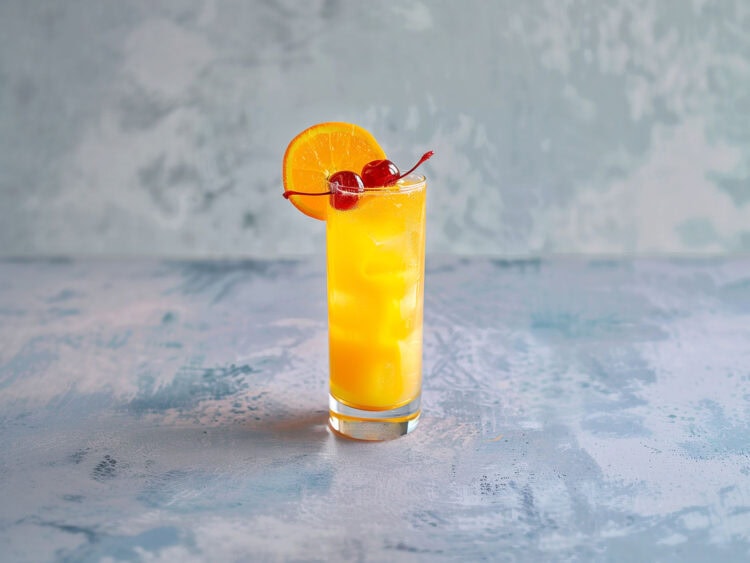The Classic Original Martini Recipe, Stirred Not Shaken
We may get commissions for purchases made through links in this post.
The Gin Martini has been around forever, and for good reason. It features just three ingredients – vermouth, gin and your choice of garnish – and a fascinating taste that’s hard to describe.
This is one of the most iconic and beloved cocktails of all time. Whether you’re a seasoned cocktail connoisseur or a newcomer to the world of mixology, learning to make the Martini is a rite of passage that every true spirit enthusiast should undertake.

The Origins of the Dry Martini
No one’s sure where the Martini originated. It probably evolved from a cocktail called the Martinez, which is older. This early iteration of the Martini featured a more generous portion of vermouth, but over time, the recipe evolved to feature a higher ratio of gin.
What’s In It
At its core, this drink is a remarkably straightforward cocktail, consisting of just two primary ingredients.
Gin
The choice of gin greatly impacts the flavor of this drink. Traditionally, London Dry gins, with their bold, juniper-forward flavors, have been the go-to choice for Martini enthusiasts. Brands like Tanqueray, Bombay, and Beefeater are all classic options.
In recent years, however, the explosion of craft gin distilleries has introduced a wealth of new spirits, each with its own unique botanical blend and flavor profile. Botanicals like citrus, spices, and even savory herbs can all contribute nuanced layers to the Martini experience.
Do you prefer a more classic, juniper-dominant style, or are you interested in exploring the more modern, botanically complex gins on the market? Experiment with different brands and find the one that best suits your personal taste preferences.
Vermouth
The role of vermouth in the dry Martini is often a topic of much debate and discussion among cocktail enthusiasts. Traditionally, dry (or “extra dry”) vermouths, such as Noilly Prat or Dolin Dry, have been the go-to choices for this cocktail.
These vermouths are characterized by their relatively low sugar content and more pronounced herbal and botanical notes, which help to balance the potent flavors of the gin.
Stirred, not Shaken
There is a trick to making a great gin martini – and that’s to stir it rather than shake it. It’s a fair point that James Bond preferred it shaken, and if you do, then stick with it. But at least give stirring a try.
Shaking has two effects on cocktails: it makes them colder and it waters them down. This is great for lots of cocktails, but less so for the gin martini.
Gin’s flavor is a little more delicate than some liquors. It’s got herbal or floral notes to discover as you sip, and watering it down lessens that flavor.
So in this recipe, you stir the gin in a cocktail shaker with ice to chill it, because stirring chills it without watering it down. You use a shaker rather than a mixing glass so you can easily filter out the ice when you pour it into the glass.
Garnishing Your Martini
On most drinks, garnish isn’t that important. But in this one, it’s crucial. It’s a third ingredient.
You might be used to seeing a martini with olives – that’s the classic garnish. But a lemon twist is also common, and well worth trying.
A lemon twist adds citrus notes while the olive adds a flavor that’s more tangy and salty. Both versions taste wonderful, but many drinkers develop a strong preference for one or the other.
Olives can be lined up on a pick and simply sat in the drink. They’ll release enough aromatic liquid to add a hint of flavor to the drink that way.
With lemon twists, on the other hand, bartenders twist the lemon peel above the drink to release oil. Then when the lemon twist is placed in the drink, it adds a note of citrus.
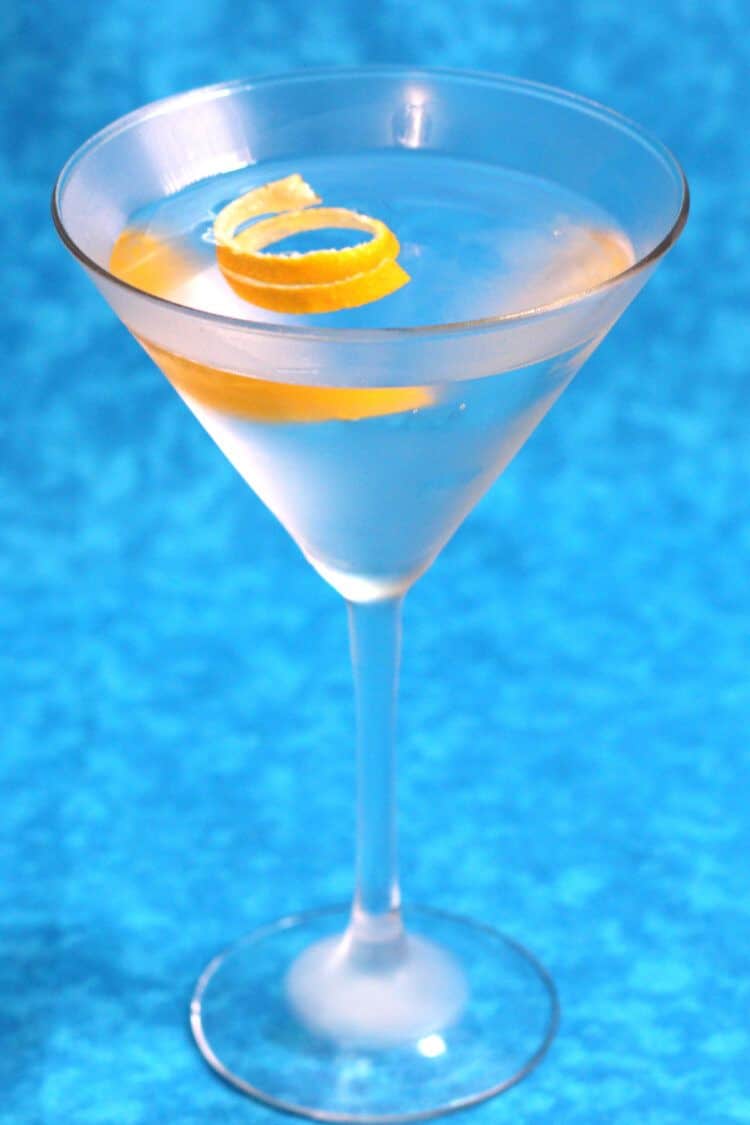
Keep It Chillin’
This is a drink best served chilled. This means you should keep your spirits in refrigeration. It also means you should stick your martini glasses in the freezer for at least 5 minutes before you pour.
In my experience, chilling the glass along with the ingredients takes a good martini to a whole new level.
To really impress guests who nurse their martinis, bring them another chilled glass after the one they’re using has lost its frost. Pour what’s left of their martini into the new glass.
You can top it off, too, if you’ve made a big batch in a pitcher. It’s also a good idea to keep your shaker chilled when you’re not using it.
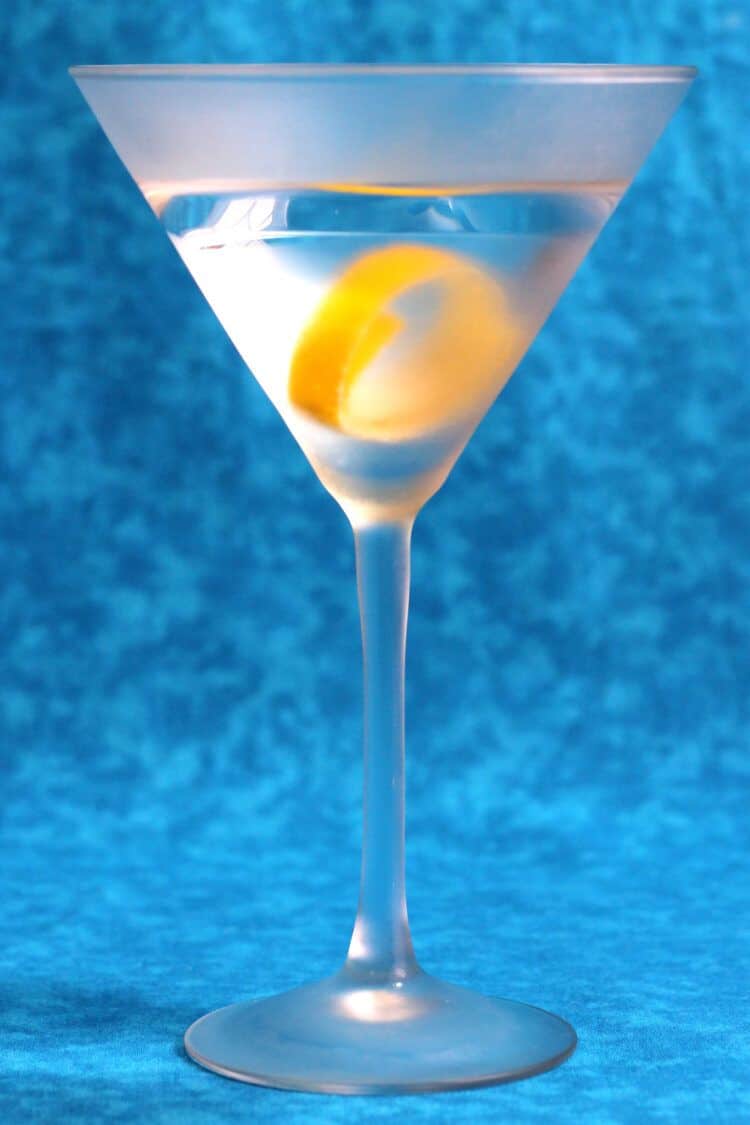
Variations
Almost any drink calls itself a martini these days. These are some of the intriguing variations that have emerged over the years.
The Dirty Martini
The Dirty Martini is a popular variation that adds a splash of olive brine to the classic gin and vermouth combination. This addition lends a savory, briny note to the cocktail, which can be a delightful complement to the botanical flavors of the gin.
The Vesper Martini
Named after the character Vesper Lynd in the Ian Fleming novel Casino Royale, the Vesper Martini is a unique take on the classic cocktail that incorporates vodka alongside the traditional gin.
The addition of vodka to the gin and vermouth mixture creates a slightly softer, more rounded flavor profile, while still maintaining the distinctive botanical notes of the gin.
The Espresso Martini
For a more modern and unexpected twist on the Martini, consider the Espresso Martini. This cocktail combines the classic gin and vermouth base with a shot of freshly brewed espresso, creating a rich, indulgent sipping experience.
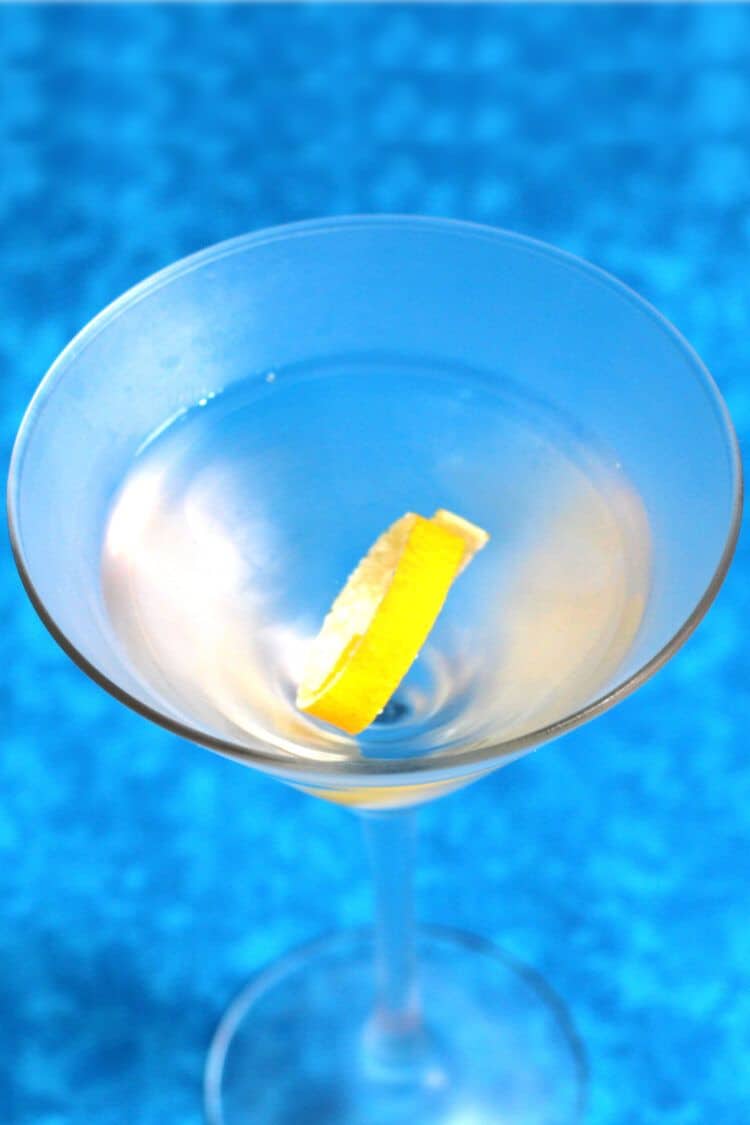
Gin or Vodka?
When you order a Martini, your bartender or server should ask you two questions: gin or vodka? And lemon or olive? If they don’t ask, you should tell them what you want.
The big difference between gin and vodka is the flavor of the drink. Vodka doesn’t really add any, so the taste comes from the vermouth and the garnish you chose.
Gin, as discussed above, adds its own notes. Citrus, herbs, flowers – it depends on the gin you choose.
If you dislike vermouth, and you’ve only ever tried a vodka martini, you should try this recipe instead. The gin has a strong flavor that dominates the vermouth.
This drink recipe is as dry as it can get. All the sweetness comes from the vermouth, and you only use enough to swish around the sides of the glass.
If you find it too dry, feel free to add a little vermouth. Start by not emptying the vermouth you’ve swished in the glass. If that’s not enough, add a little vermouth into your shaker of gin until you find the amount you like.
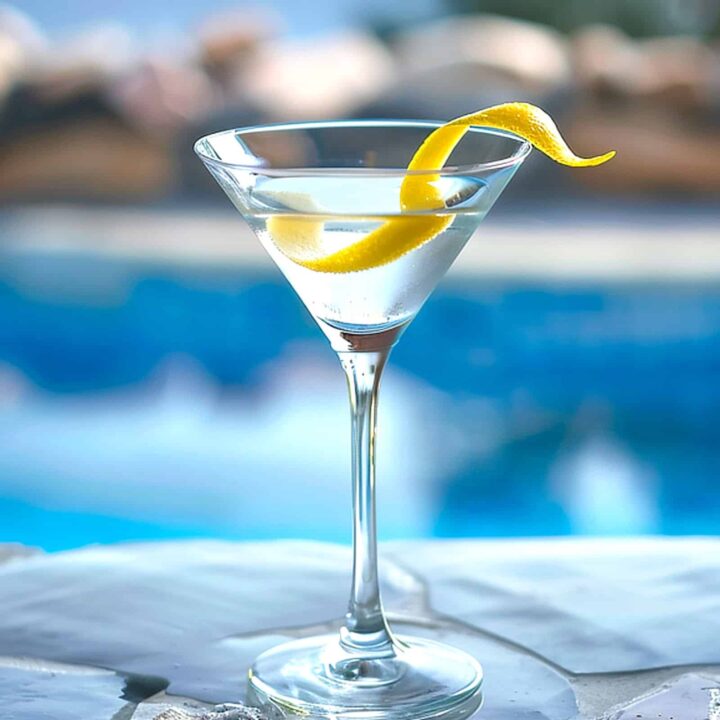
The Gin Martini
This classic gin Martini cocktail recipe is about as dry as the Martini can get. If it's too dry for you, just add more vermouth. The more vermouth, the less dry the drink will be. Be sure to use a great gin that you enjoy, because it will dominate the flavor.
Ingredients
- Dry vermouth
- 2 ounces Tanqueray No. 10 gin
- Lemon twist or olives
Instructions
- Pour a little dry vermouth into a martini glass and gently slosh it around the glass until the inside of the glass is coated.
- Get rid of the excess vermouth.
- Gently stir the gin in a shaker full of ice.
- Strain it into the glass.
- Serve with an olive or lemon twist.
Notes
Many other recipes suggest stirring all the ingredients together in a shaker with ice and then straining the mixture into the glass. You can experiment to find your preferred method.
Recommended Products
Last Updated:

